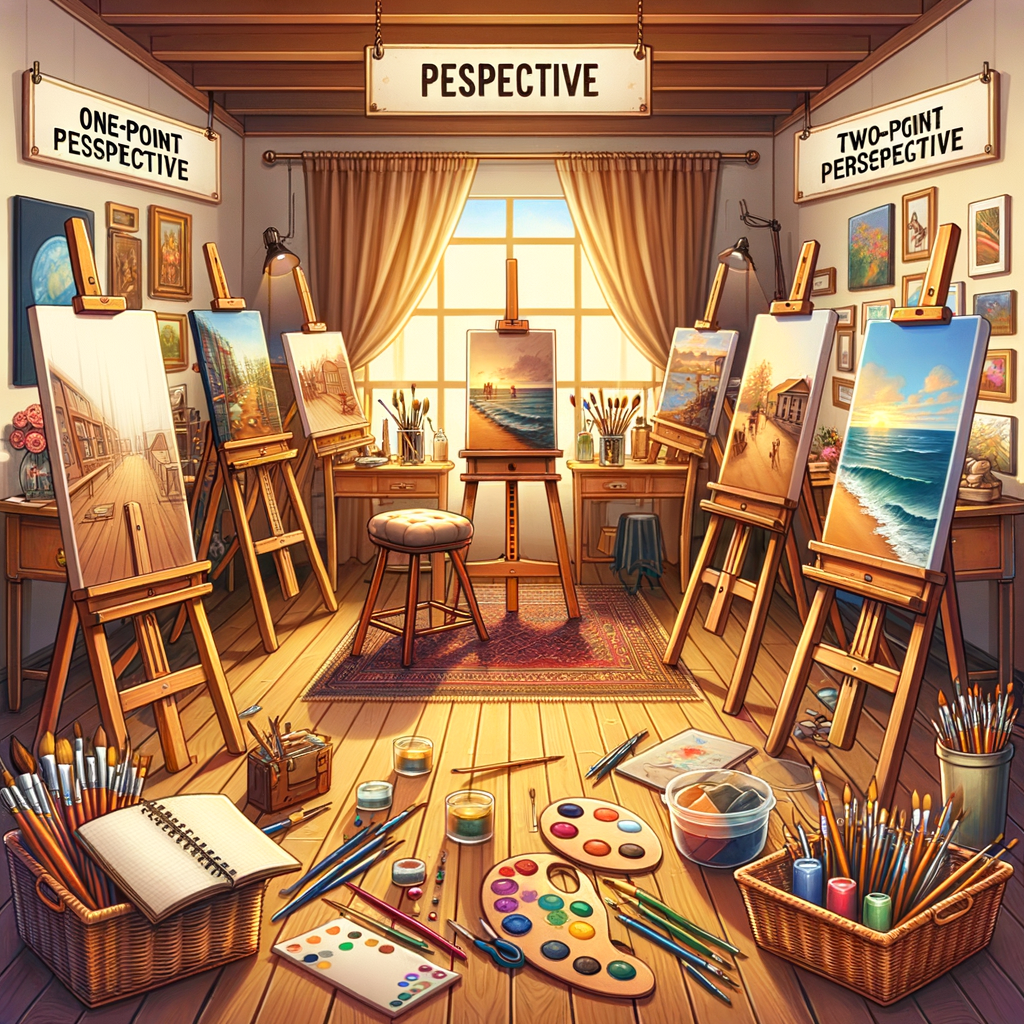
Mastering perspective in digital art can seem daunting, especially for beginners. However, with the right techniques and practice, you can unlock the ability to create depth and realism in your artwork. In this article, we'll explore the foundational concepts of perspective, the various types of perspectives, and some practical tips and tricks to help you draw convincing three-dimensional spaces.
Perspective is a crucial element of art that allows artists to create the illusion of depth and space on a two-dimensional surface. At its core, perspective involves the way objects appear smaller as they move further away from the viewer. Understanding this principle will not only enhance your digital artwork but also elevate your overall artistic skills.
There are several types of perspective that artists commonly use, including one-point perspective, two-point perspective, and three-point perspective. Each type has its own rules and applications, and mastering them can significantly improve the realism of your drawings.
One-Point Perspective
One-point perspective is the simplest form of perspective drawing. It involves a single vanishing point on the horizon line. This technique is commonly used when drawing objects that are facing directly towards the viewer, such as roads, train tracks, or interior rooms.
To effectively use one-point perspective:
- Start by drawing a horizontal line across your canvas to represent the horizon line.
- Identify your vanishing point, which should be placed somewhere along the horizon line.
- Draw lines from the edges of your objects to the vanishing point, ensuring that all lines converge toward this point.
- Select a position for your objects, keeping in mind that objects closer to the viewer will appear larger than those further away.
By practicing one-point perspective, you will develop a greater understanding of how to create depth in your art.
Two-Point Perspective
Two-point perspective involves two vanishing points located on the horizon line. This technique is commonly used for drawing objects that are angled away from the viewer, such as buildings located at an angle or street corners.
To utilize two-point perspective effectively:
- Begin by drawing the horizon line and placing two vanishing points at either end of the line.
- Select a corner of your object that will be closest to the viewer, and draw vertical lines to represent the height of your object.
- Connect the top and bottom points of the vertical lines to both vanishing points to create the illusion of depth.
- Adjust lines to ensure correct proportions and perspectives as you work on your digital canvas.
By mastering two-point perspective, you will be able to create complex and dynamic scenes that engage the viewer’s eye.
Three-Point Perspective
Three-point perspective is the most complex of the perspective techniques, incorporating three vanishing points—two on the horizon line and one either above or below. This method is often used for drawing tall buildings viewed from a low angle or deep chasms viewed from above.
To effectively use three-point perspective:
- Draw the horizon line and place the two vanishing points for your horizontal lines.
- Identify the third vanishing point, which will be either above or below the horizon line based on your viewpoint.
- Draw vertical lines from the base or top of your object, connecting them to the three vanishing points.
- Be mindful of how lines converge and adjust your drawing accordingly.
Three-point perspective allows for dramatic compositions and can imbue your work with a sense of grandeur and scale.
Common Mistakes to Avoid
When learning perspective, it's easy to fall into common traps. Here are a few mistakes to watch out for:
- Ignoring proportion: Ensure that your objects maintain consistent proportions relative to their distance from the viewer.
- Unrealistic vanishing points: Always make sure to situate your vanishing points logically on the horizon line.
- Neglecting the horizon line: The horizon line is essential for creating a sense of space and should not be overlooked.
Tips for Practicing Perspective
Improving your perspective skills requires practice. Here are some tips to keep in mind:
- Draw simple shapes: Start with basic shapes like cubes and cylinders to familiarize yourself with perspective principles.
- Use reference images: Look for photographs or other artwork that exemplifies good perspective and try to replicate them in your own work.
- Experiment with angles: Try drawing the same subject from different angles to practice different perspectives.
As you work on mastering perspective, remember that patience and practice are essential. Don't be discouraged by mistakes; instead, use them as learning opportunities. The more you draw and experiment, the more skilled you will become at creating depth and realism in your digital artwork.
Final Thoughts
Understanding and implementing perspective in your digital art can significantly enhance the quality of your work. By mastering one-point, two-point, and three-point perspective, you’ll be able to create stunning, immersive compositions that captivate your audience. Keep practicing, seek feedback, and most importantly, enjoy the process of learning and growing as an artist. The world of digital art is vast and full of possibilities, so embrace every opportunity to refine your skills and express your creativity!

